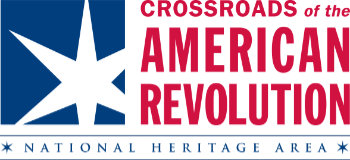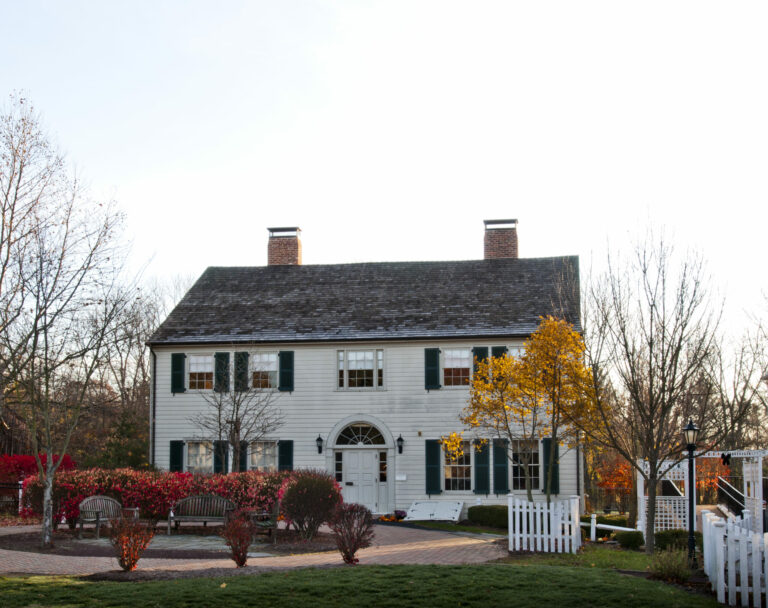Below are responses to some of the most commonly asked questions about the Visitor Readiness assessment Crossroads of the American Revolution commissioned on 150 New Jersey historic sites.
Crossroads hired the site assessment team of Clarke Caton Hintz (historic architects), Hunter Research (historical interpretation specialists), and Hargrove International (heritage travel experts), to look at current site conditions and make recommendations on a broad range of issues, including preservation, site access, historical interpretation, visitor services and potential heritage travel tour routes.
The full report is available here: https://revolutionarynj.org/crossroads-annual-meeting-replay-site-and-visitor-readiness-assessment-report-available/
How were the sites chosen? What were the qualifications?
The sites selected for the Visitor Readiness study were selected by a statewide team of historians drawn from academic, professional and governmental ranks.
The selection team started by reviewing sites listed in the Environmental Assessment of Crossroads’ original Management Plan, which was developed following the National Heritage Area’s designation by Congress. Other statewide studies were also consulted, including the 2013 Economic & Fiscal Impacts of Heritage Tourism in New Jersey, Crossroads of the American Revolution, A Guide to New Jersey’s American Revolutionary War Sites, and Battles and Skirmishes of the American Revolution in New Jersey by David Munn, as were State Historic Preservation Office designations.
To reflect the impact of the American Revolution on the entire state, the team ensured that every one of New Jersey’s 21 counties was represented by at least one historic site.
My site wasn’t included in the study. Does that mean we can’t be part of the statewide commemoration?
The study was not intended to be a vetting process to determine sites eligible for participation in the statewide commemoration of the 250th anniversary of the United States. There is no list of “approved” sites that would prevent other communities or sites from participating in the commemoration.
The planning team understands that there are hundreds of Revolutionary-era historic sites of merit across New Jersey, and every community in the state is encouraged to take part in the 250th.
We encourage all interested groups to stay updated on plans for the 250th by following the Crossroads web page and participating in the quarterly update sessions jointly held by Crossroads and the New Jersey Historical Commission.
I don’t agree with the market category my site was placed into (Attractor, Attraction, Visit While There, Community Resource). How can I get this changed?
Attractor, Attraction, Visit While There and Community Resource are market-facing categories that reflect a visitor’s perception of a place, rather than what the operator of the site considers to be the site’s value to potential visitors. These categories are an industry guideline established by the National Trust for Historic Preservation to help destinations gauge their assets according to visitor motivation based on site significance and experience. The tourism industry uses similar guidelines to qualify attraction listings in travel guides or include in marketing materials.
Using these guidelines will help New Jersey improve its competitiveness in the heritage tourism market among other states like Pennsylvania, Massachusetts and Virginia.
Some sites were listed in the report as having potential for being designated in a different category if existing issues were addressed. Examples include:
- Setting and keeping reliable hours of operation, including at least one weekend day.
- Prominent on-site signage.
- Interpretation and exhibits that present the site’s connection to New Jersey’s Revolutionary story.
- Consistent tours that engage visitors.
Why is my site listed as “Not Visitor Ready?” I am always happy to talk to visitors, answer questions or give a tour if a visitor is on site when I am there.
The most basic definition of visitor readiness is that a site has regular and dependable operating hours — including at least one weekend day per week, when the greatest number of people are likely to visit. The goal is to assure visitors that the site will be open and staffed to offer a worthwhile experience. The surest way to earn a negative review on online rating sites like Trip Advisor is if a visitor arrives only to find that the site is closed.
A full explanation of visitor readiness is available on page 21 of the Site and Visitor Readiness Assessment.
I don’t agree with factual information on my site’s individual assessment. How can I have it changed?
An individual site’s assessment reflects conditions at the time our team visited. The intent was to point out issues to be addressed and to provide a general estimate of potential costs. Consultants visited without advance notification to ensure an objective review of the current site/experience.
We understand that site managers may have resolved some of the issues in the time since the assessment, or that plans may be underway to do so, and that you would want readers of your site’s assessment report to have that information. Crossroads will forward any requests for your site’s report to the contact person on record, so your group will always have the opportunity to provide additional information to anyone who receives the individual report.
How can I get the assessment for a specific site?
Please contact Crossroads of the American Revolution at [email protected] . We will forward your request for information to the site on your behalf. The site representative may also choose to include information about their group’s plans or comments on the site assessment.
How were costs assessed? What will these price ranges be used for?
The primary objective of assessing cost estimates was to determine a fundraising target for the Campaign Council for the 250th Given the broad scope of the statewide assessment project and the limited time that was available to complete it, the cost assessment for each site reflects a general range for work and materials to make the site visitor ready. They reflect the initial impressions and the preliminary analyses of collected information prepared by the assessment team.
The assessment team included preservation architects, historic interpretive specialists and pricing experts with broad experience in assessing historic site needs and related costs.
What does “Community Resource” mean? How does that designation affect my site’s participation in the statewide 250th?
Sites in the “Community Resource” category play an important role in introducing visitors and local residents to New Jersey’s Revolutionary heritage. In fact, these sites may be the first historic place that a youngster or new resident visits, sparking a lifelong interest.
Community Resources can also act as their community’s focal point for special activities throughout New Jersey’s 250th commemoration.
The 250th commemoration will include a focus on the importance of history education as part of civic engagement. Community Resource sites can potentially help in this effort by hosting field trips and projects from local schools, social groups and civic organizations.
I have a question that’s not listed here. How can I get an answer?
Please submit your question to Crossroads at [email protected] . You’re also welcome to ask your question at the next 250th update session. Time and date for that session will be announced on Crossroads’ website and our Facebook page.



